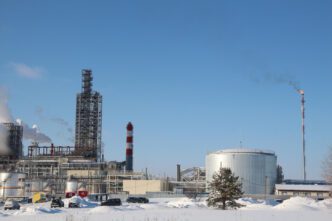Executive Summary
The Story So Far
Why This Matters
Who Thinks What?
The European Union is currently deliberating its 19th package of sanctions against Russia, which includes considering punitive measures against Indian and Chinese companies accused of facilitating Russia’s oil trade. This move comes as President Donald Trump, asserting his readiness to implement “major” sanctions on Russian oil, pressures European nations to join a concerted effort aimed at crippling Moscow’s energy revenues, a crucial source of funding for its war in Ukraine. However, the EU faces significant internal resistance from member states such as Hungary and Slovakia, who express concerns over the economic implications and costs of securing alternative oil supplies.
US Pressure and Proposed Measures
President Trump has indicated he is prepared to advance with substantial sanctions on Russian oil, contingent on European nations adopting similar measures. These proposed penalties would target the energy trade that is vital for financing President Vladimir Putin’s military actions in Ukraine, specifically focusing on buyers from China and India.
The US proposal, shared with Group of Seven members, reportedly suggests tariffs of up to 100% on China and India. It would also target Russian oil companies and the intricate networks that enable Moscow to transport crude oil and profit from its trade.
EU’s 19th Sanctions Package
The EU’s ongoing deliberations for its 19th sanctions package against Russia are comprehensive. The package could potentially target approximately half a dozen Russian banks and energy companies, alongside Russia’s payment and credit card systems, and various crypto exchanges. Further restrictions on the country’s oil trade are also under consideration.
Following the implementation of sanctions in 2022, crude oil imports from Moscow to the EU significantly declined, dropping from 27% of total EU imports before the conflict to around 3% last year. The current US push places additional pressure on Europe, which had previously delayed phasing out Russian gas until after 2027 and granted temporary exemptions from its Russian oil sanctions to landlocked countries like Hungary and Slovakia.
Internal EU Hurdles
A primary challenge for the EU is overcoming resistance from certain member states, particularly Hungary and Slovakia. These nations have consistently voiced concerns regarding the financial burden and logistical complexities associated with transitioning to alternative oil supplies.
The EU will need to explore various mechanisms to address these concerns, especially as the temporary exemption for these nations approaches its end. Such measures would aim to mitigate the economic impact on these member states while maintaining a unified front against Russia’s energy trade.
Outlook
The European Union is navigating a complex geopolitical and economic landscape as it considers its next steps in sanctioning Russia. The interplay between US demands, the economic sensitivities of its own member states, and the overarching goal of diminishing Russia’s war funding presents a multifaceted challenge for the bloc’s economic policy.








